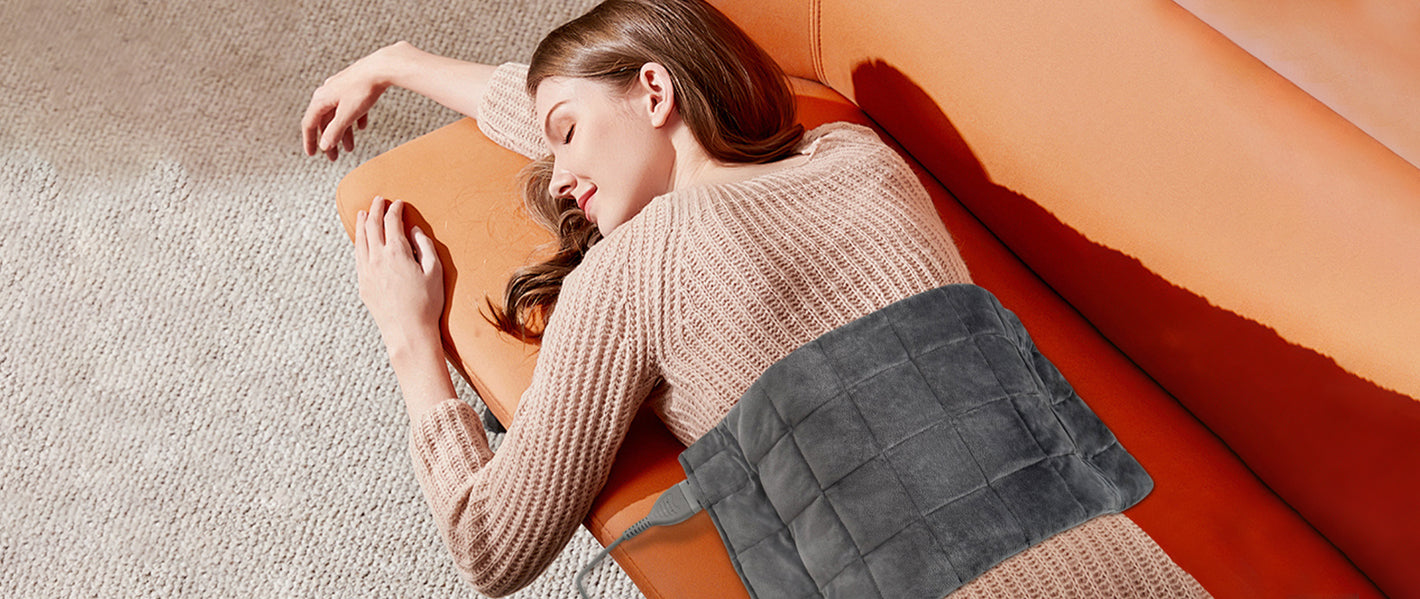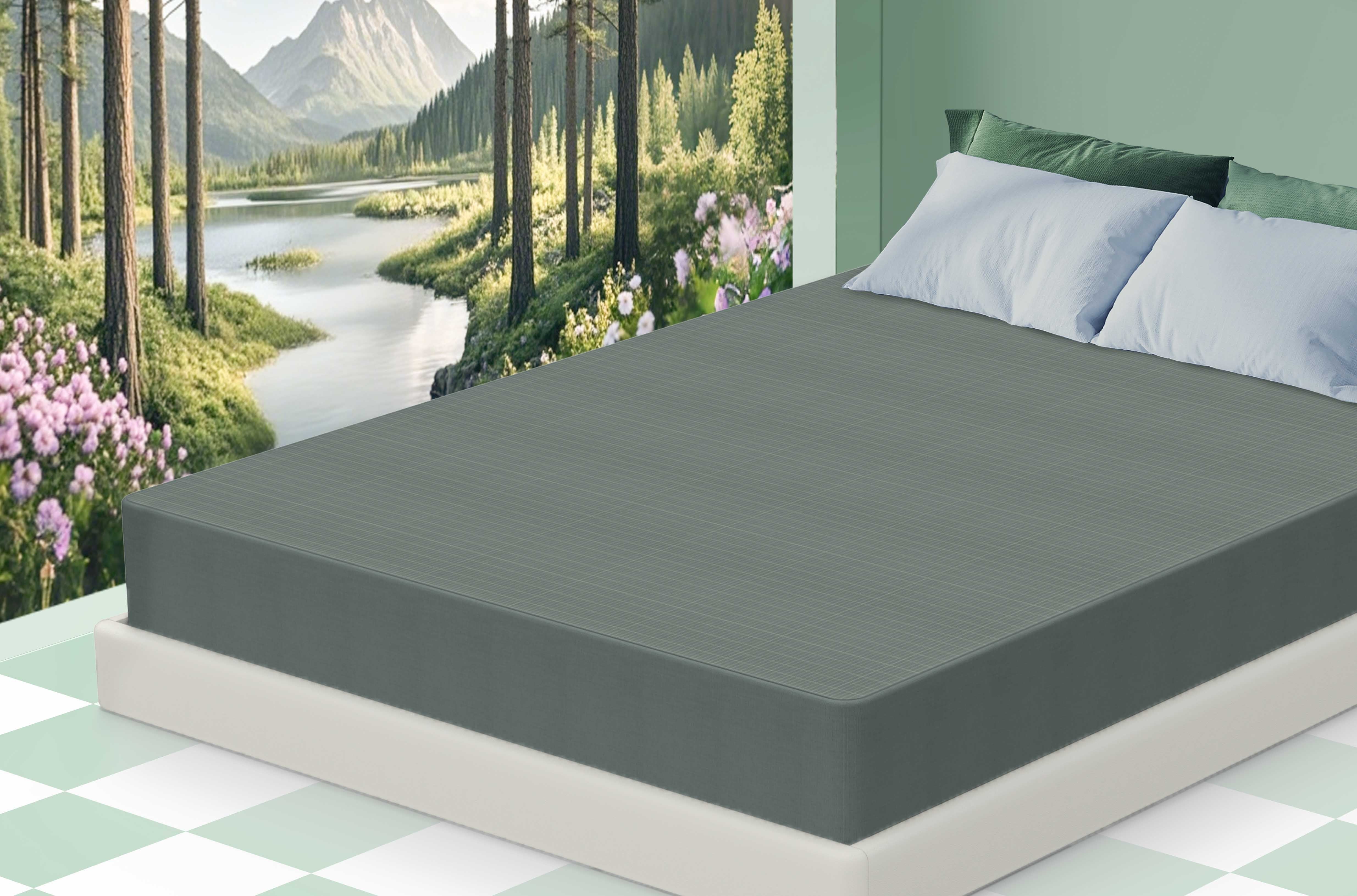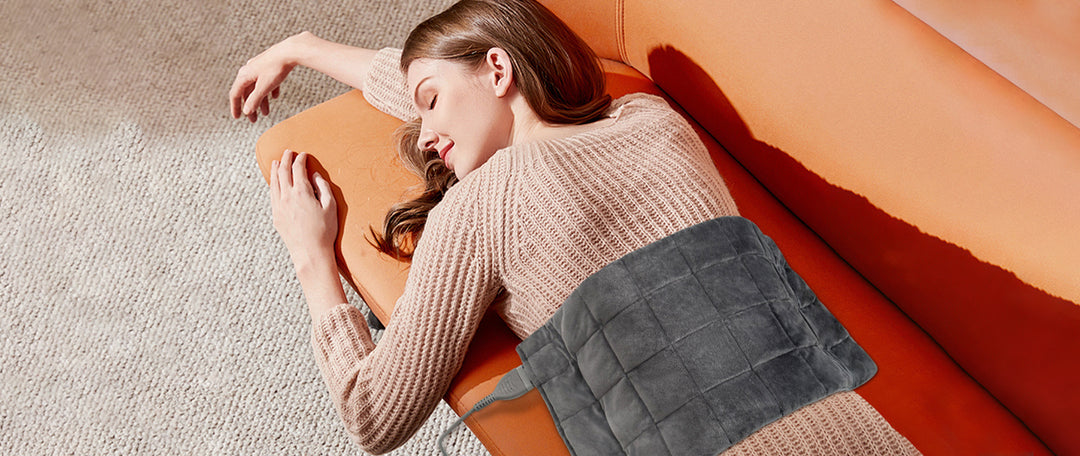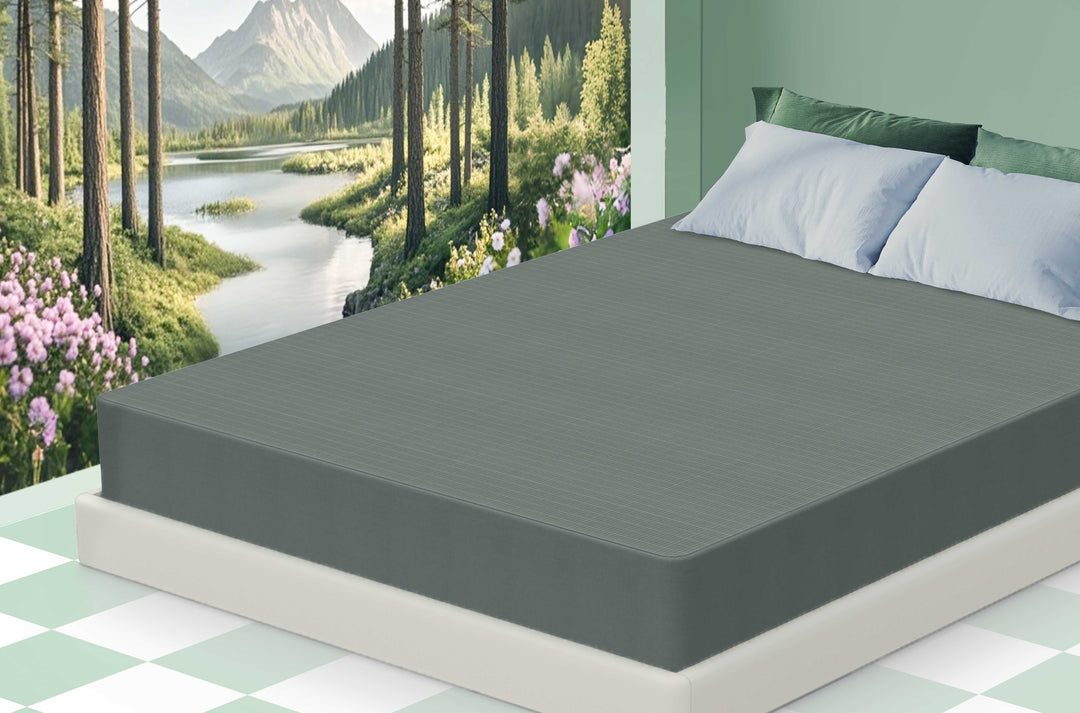Essential Oils for Grounding: Evidence-Based Guide to Earth Connection
That scattered, disconnected feeling hits different at 3 AM. While physical grounding—touching earth directly—has proven health benefits, specific essential oils can trigger the same parasympathetic nervous response that helps us get back to center. The problem? Most guides recommend oils without explaining why they work or how to use them effectively for the best results.
It's time to replace that floating feeling with solid ground beneath your feet. We'll break down exactly which oils help with grounding, the science behind them, and pro techniques that actually deliver calming and balancing effects. Let's dig in.
Introduction to Grounding
Grounding means bringing your energy back to earth—literally and figuratively. In aromatherapy, grounding essential oils work by anchoring scattered thoughts and calming an overactive nervous system through specific chemical compounds that interact with our limbic system.

Physical vs. Emotional Grounding: Two Sides, Same Coin
-
Physical grounding happens when we make direct contact with the earth's surface. Think bare feet on grass, hands in soil, or body against sand. This connection allows electrons from the earth to neutralize free radicals in our bodies and helps us tune into the present moment through our senses. Scientists call it "earthing," and research shows it reduces cortisol levels within 30 minutes, supporting overall health.
-
Emotional grounding works differently. It's about feeling centered, present, and stable regardless of external chaos. When anxiety spirals or stress peaks, emotional grounding techniques help pull us back to baseline. This is where essential oils shine—they bypass conscious thought and speak directly to our nervous system.
While physical grounding targets the body, and emotional grounding targets the mind and feelings, both aim to bring you back to the present. They often complement each other: calming the body can soothe emotions, and stabilizing emotions can ease physical tension. Together, they create a holistic approach to managing stress, anxiety, or overwhelm.
Why Grounding Matters Now More Than Ever
Modern life keeps us suspended—literally. Rubber-soled shoes, multi-story buildings, and concrete everywhere. We're electrically isolated from Earth's surface for 95% of our day. Add screen time and constant stimulation, and our nervous systems never fully reset.
Grounding essential oils offer a portable solution. They help recreate that earthy, centered feeling, whether we're in a high-rise office or stuck in traffic. The key? Knowing which oils are actually ground versus those that just smell "earthy." Using the best essential oils in the right way can balance your energy, get you feeling calm, and support long-term mental and physical health.
How Essential Oils Promote Grounding
Essential oils help ground us in ways that modern science is beginning to explain. Their impact goes beyond pleasant aromas, influencing brain chemistry, nervous system activity, and even immune function.

-
Rapid Brain Response: Volatile compounds enter the olfactory system and trigger fast changes in brain chemistry and the autonomic nervous system. Earthy scents, like vetiver, calm panic before conscious thought. These compounds activate neural pathways similar to those fired when physically touching the earth, supporting emotional balance and health.
-
Activating GABA Receptors: Compounds like linalool in lavender modulate GABA_A receptors, inhibiting overactive neurons and reducing anxiety. Inhalation enhances GABAergic neurotransmission, promoting calm.
-
Modulating Brain Waves: Aromatherapy influences brain activity. Lavender boosts theta and alpha for relaxation, rosemary and jasmine enhance alertness via beta waves, while rose and orchid improve focus.
-
Triggering Nature Memories: The olfactory system links directly to the limbic system. Scents can evoke nature-associated memories, enhancing safety, calm, and grounding.
-
Reducing Inflammation: Many essential oils, such as lavender, reduce inflammation and oxidative stress, helping modulate the immune response and lower stress-related inflammation.
Top Grounding Essential Oils
Let's get straight to the top essential oils for grounding.
The Heavy Hitters
When it comes to grounding, these essential oils stand out as the strongest allies. They work deeply on the nervous system, emotions, and body chemistry, making them the go-to choices for instant and lasting balance.

-
Vetiver (Chrysopogon zizanioides): Called "oil of tranquility" in India, vetiver essential oil contains 100+ sesquiterpenes. Its earthy aroma goes deep—literally grounding your nervous system through GABA activation. Add a few drops to any carrier oil for instant earth connection, making it one of the most powerful grounding oils.
-
Patchouli (Pogostemon cablin): Beyond its reputation, patchouli offers serious grounding properties. The compound patchoulol increases dopamine while decreasing cortisol. It has been widely used in rituals, meditation, and emotional balance practices across cultures.
-
Cedarwood (Cedrus atlantica): With 98% sesquiterpenes, cedarwood promotes mental acuity while keeping you rooted. Its warm, woody notes trigger ancestral memories of forests—our original grounding space.
-
Black Spruce (Picea mariana): Black spruce brings the forest floor to you. Rich in bornyl acetate, it creates a calming effect that's both grounding and energizing. Native Americans used it for emotional health and spiritual grounding.
Supporting Players
While not as intense as the heavy hitters, these oils provide a steady foundation for relaxation, mindfulness, and emotional stability. They work beautifully in blends, meditation practices, and daily rituals to maintain balance.

-
Frankincense balances the crown and root chakras simultaneously.
-
Sandalwood deepens meditation and promotes a deep sense of presence.
-
Myrrh connects us to Mother Earth through its ancient, resinous base.
-
Lavender soothes the nervous system, helping to release tension and create calm stability.
For those who prefer a spicy scent, ginger root and black pepper ground through warmth rather than earthiness. They activate circulation, pulling awareness into the body, making them one of the more invigorating grounding options.
💡 Tip: Try layering one heavy oil like vetiver with a lighter note like frankincense or sandalwood to get both depth and brightness in your grounding blend.
Essential Oil Blending for Grounding
Creating your perfect grounding oil blend requires understanding oil synergy. Natural oils work better together—but ratios matter.

The Foundation Formula
Start with this base:
-
40% grounding base oil (vetiver or patchouli)
-
30% woody middle note (cedarwood or black spruce)
-
20% balancing top note (frankincense or sandalwood)
-
10% carrier oil for dilution
Three Proven Grounding Blends
| Blend Name | Best For | Recipe | How to Use |
| Forest Floor | Deep grounding during anxiety |
|
Mix in a roller bottle for portable grounding. Apply to pulse points when anxiety peaks. |
| Earth & Fire | Energized morning grounding |
|
Perfect for morning routines when you need grounding without sedation. |
| Sacred Ground | Spiritual practice & meditation |
|
Use during meditation, prayer, or spiritual grounding practices. |
Advanced Blending Tips
Layer your essential oil blend by molecular weight. Heavier molecules (vetiver, patchouli) go first, lighter ones (black spruce, frankincense) last. This creates depth that mirrors Earth's layers.
Temperature affects potency. Warm your carrier oil slightly before adding other essential oils—heat can help molecules bind. Add the blend to a warm bath and watch grounding happen through both aromatherapy and hydrotherapy.
Store blends in dark glass. Light degrades sesquiterpenes, weakening grounding properties. A properly stored grounding blend maintains potency for 12-18 months.
How to Use Grounding Essential Oil
Getting the most from your grounding oil means understanding application methods that actually work. Beyond basic diffusion, strategic topical use can transform how these oils affect your emotions, balance, and focus.
Direct Application Methods

-
Pulse Point Power: Apply diluted grounding oil to flex points where blood vessels sit close to the skin—wrists, temples, behind ears, and ankles. These areas absorb oils quickly while providing aromatherapy benefits. A rollerball application works best for precision without waste.
-
Foot Focus: Our feet contain 7,000 nerve endings connected to every organ system. Massaging patchouli or vetiver into the soles can help create instant grounding through reflexology plus aromatherapy. This method proves especially soothing before bed or during stressful situations.
-
Layering Technique: Start with heavier oils (vetiver), wait 30 seconds, then add lighter ones (white fir or lavender). This creates depth that mirrors Earth's layers while giving each oil a moment to penetrate skin properly.
Meditation and Mindfulness with Essential Oils for Grounding
Using grounding oils can deepen your meditation and mindfulness practice:

-
Set the Scene: Diffuse grounding oils or apply them to pulse points before beginning your meditation.
-
Focus on Breath: Inhale the aroma slowly and deeply, letting it anchor you in the present moment.
-
Body Awareness: Scan your body, noticing sensations, tension, or areas of comfort.
-
Sensory Anchoring: Combine the scent with visualization—imagine roots growing from your feet into the earth or a calm, grounding energy enveloping your body.
-
Gentle Observation: Notice thoughts and emotions without judgment, returning focus to breath, body, or aroma whenever your mind wanders.
💡 Tip: Layering oils before meditation can create a richer sensory experience, making grounding more effective and sustaining calm throughout your session.
Combining Oils with Grounding Sheets During Sleep
Here's where grounding gets revolutionary: combining essential oils with conductive grounding sheets amplifies both practices. While your body connects to Earth's electrons through the sheet, grounding oils enhance the parasympathetic response and improve sleep quality.

Grounding sheets like Homlyns' 95% cotton with 5% pure silver fiber conduct the earth's negative ions directly to your body during sleep. When you add grounding essential oil to this practice, you're working on multiple levels:
-
Physical grounding through electron transfer
-
Aromatherapy grounding through the limbic system
-
Skin absorption provides sustained release throughout the night

Apply a grounding blend to your feet 15 minutes before bed, then slip into bed with your grounding sheet connected. The silver fibers in quality grounding sheets maintain conductivity while the oils work their magic—creating deeper, more relaxing sleep than either method alone.
Studies show grounding sheets can be used to reduce inflammation markers after two nights. Add essential oils that aid circulation (like blue tansy), and you're addressing both the electrical and chemical aspects of inflammation simultaneously to support long-term health.

Advanced Application Strategies

-
Bath Soaking: Add 5-8 drops of grounding blend to Epsom salts before adding to bathwater. The magnesium enhances grounding while providing mineral support for relaxation, while oils absorbed through the skin deliver deeper therapeutic effects.
-
Diffusion Timing: Diffuse grounding oils 30 minutes before meditation or sleep. This pre-loads your environment, creating an instant grounding trigger when you get into the space.
-
Workplace Grounding: Keep a roller ball blend at your desk. Apply to wrists during meetings for subtle grounding that maintains professional clarity without obvious aromatherapy—one of the most practical ways to stay calm at work.
-
Aromatherapy Necklaces: Wear diffuser jewelry or aromatherapy necklaces infused with essential oil. These are widely used to provide continuous grounding support throughout the day, whether at work, commuting, or practicing mindfulness on the go.
Safety and Precautions
Grounding oils pack serious power—respect them accordingly. These concentrated plant compounds require proper handling for safe, effective use.
Dilution Guidelines
Never apply undiluted essential oils directly to skin. Standard dilution ratios:
-
2% for daily use: 12 drops per ounce of carrier oil
-
3% for acute situations: 18 drops per ounce
-
1% for sensitive skin: 6 drops per ounce
Patchouli and vetiver are particularly potent. Start with lower concentrations and increase gradually as your skin adjusts.
Patch Testing Protocol
Before using any new grounding blend:
-
Dilute one drop in 1/4 teaspoon carrier oil
-
Apply to the inner forearm
-
Cover with a bandage for 24 hours
-
Check for redness, itching, or irritation
Special Considerations
-
Pregnancy: Avoid blue tansy, myrrh, and high concentrations of any grounding oil during pregnancy. Lavender and frankincense remain safe when properly diluted.
-
Children: Use a 0.5% dilution for kids under 12. Avoid patchouli for children under 2.
-
Medications: Grounding oils can enhance sedative effects. If taking anxiety medications or sleep aids, start with minimal amounts and monitor your response.
-
Sun Sensitivity: Citrus-based grounding oils increase photosensitivity. Avoid sun exposure for 12 hours after topical application.
Other Grounding Techniques for Anxiety and Stress
Essential oils work best as part of a comprehensive grounding practice. Combining methods creates resilience that single techniques can't match.
Physical Grounding Methods

-
Direct Earth Contact: Nothing beats an actual earth connection. Spend 20-30 minutes daily with bare feet on grass, sand, or soil. This practice reduces cortisol within 30 minutes and improves heart rate variability—markers of reduced anxiety.
-
Cold Water Immersion: Splashing cold water on your face or wrists activates the mammalian dive response, instantly grounding your nervous system. Combine with lavender oil on temples for enhanced soothing effects.
Breathwork for Grounding

-
4-7-8 Breathing: Inhale for 4, hold for 7, exhale for 8. This technique can be used to shift your nervous system from sympathetic (fight/flight) to parasympathetic (rest/digest) within three cycles. Add grounding oils to enhance the effect.
-
Box Breathing with Aromatherapy: Apply grounding oil to wrists, then practice box breathing (4-4-4-4 pattern). The combination provides both olfactory and respiratory grounding.
Movement-Based Grounding

-
Weighted Movements: Holding weight while moving slowly grounds through proprioception. Try slow squats while diffusing white fir for mental clarity and physical presence.
-
Yoga with Essential Oils: Apply a grounding blend before practice. Focus on poses that connect you to earth—mountain pose, child's pose, legs-up-the-wall. The oils enhance your mind-body connection and can be used to deepen relaxation throughout the session.
Technology-Assisted Grounding
Modern grounding doesn't mean abandoning technology—it means using it wisely. Grounding sheets provide continuous earth connection during sleep, while grounding mats offer daytime options for office workers. See more differences on the article Grounding Mat vs Sheets.

Grounding Product Benefits:
-
Consistent connection regardless of the weather
-
Measurable reduction in inflammation markers
-
Improved sleep metrics (tracked via wearables)
-
No need for outdoor access
Combine these tools with essential oils for maximum impact. The oils provide immediate sensory grounding while the sheets or mats handle the electrical component. Together, they address anxiety from multiple angles, creating lasting stress resilience. For more details, check out our another article one effective grounding techniques for calming!
Ready to Ground Yourself Better with Homlyns?
Essential oils offer portable, powerful grounding that works within minutes. Whether you're using vetiver for a deep Earth connection or combining patchouli with breathwork, these natural tools transform scattered energy into solid presence. The science backs it—and your nervous system will thank you.
Key takeaways:
-
Physical and emotional grounding work together through complementary pathways
-
Vetiver, patchouli, and cedarwood deliver the strongest grounding effects
-
Proper dilution and application methods determine effectiveness
-
Combining oils with grounding sheets amplifies both benefits
-
Layer multiple grounding techniques for lasting anxiety relief
While essential oils provide immediate grounding through aromatherapy, Homlyns' grounding sheets work all night long—conducting earth's electrons directly to your body during sleep. Pair your favorite grounding blend with our silver-fiber sheets for the ultimate earth connection. No outdoor access needed, just deeper sleep and calmer mornings.
Reference
- Chandharakool S, Koomhin P, Sinlapasorn J, et al. Effects of Tangerine Essential Oil on Brain Waves, Moods, and Sleep Onset Latency. Molecules. 2020;25(20):4865. Published 2020 Oct 21. doi:10.3390/molecules25204865
- Her J, Cho MK. Effect of aromatherapy on sleep quality of adults and elderly people: A systematic literature review and meta-analysis. Complement Ther Med. 2021 Aug;60:102739. doi: 10.1016/j.ctim.2021.102739. Epub 2021 Jun 21. PMID: 34166869.
- Ko, LW., Su, CH., Yang, MH. et al. A pilot study on essential oil aroma stimulation for enhancing slow-wave EEG in sleeping brain. Sci Rep 11, 1078 (2021). https://doi.org/10.1038/s41598-020-80171-x
- Milanos S, Elsharif SA, Janzen D, Buettner A, Villmann C. Metabolic Products of Linalool and Modulation of GABA(A) Receptors. Front Chem. 2017;5:46. Published 2017 Jun 21. doi:10.3389/fchem.2017.00046
- Oschman JL. Can electrons act as antioxidants? A review and commentary. J Altern Complement Med. 2007 Nov;13(9):955-67. doi: 10.1089/acm.2007.7048. PMID: 18047442.
- Sattayakhom A, Wichit S, Koomhin P. The Effects of Essential Oils on the Nervous System: A Scoping Review. Molecules. 2023;28(9):3771. Published 2023 Apr 27. doi:10.3390/molecules28093771
- Zuo X, Gu Y, Wang C, et al. A Systematic Review of the Anti-Inflammatory and Immunomodulatory Properties of 16 Essential Oils of Herbs. Evid Based Complement Alternat Med. 2020;2020:8878927. Published 2020 Dec 7. doi:10.1155/2020/8878927
















Leave a comment